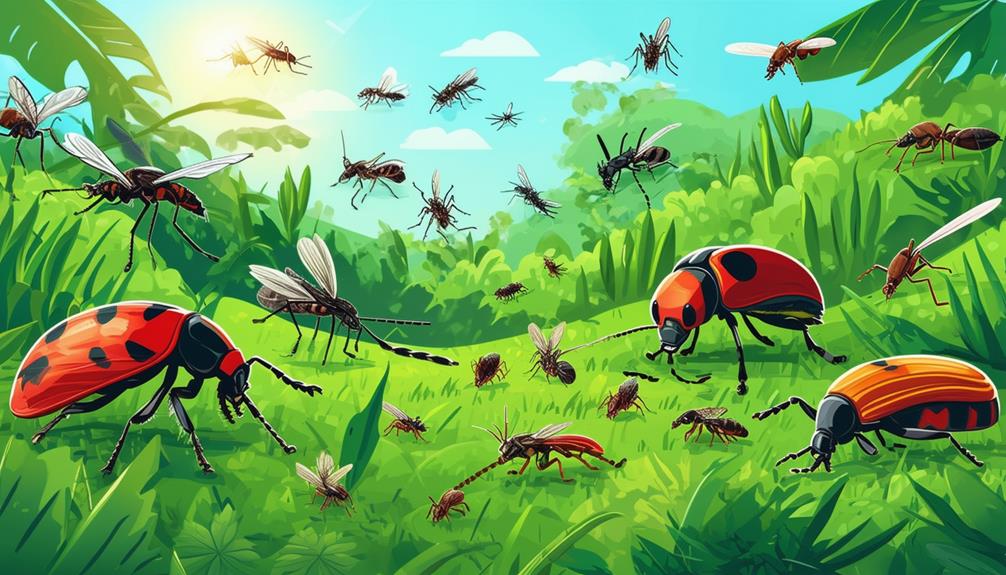
Climate change is reshaping ecosystems around the world, and its effects are particularly evident in pest populations. For residents of urban areas like Toronto, understanding these changes is crucial for effective pest management. This article explores how climate change influences pest behavior, distribution, and population dynamics, and why professional pest control services in Toronto are increasingly vital.
How Climate Change Affects Pest Populations
1. Warmer Temperatures
One of the most direct impacts of climate change is the increase in average temperatures. Warmer weather can extend the breeding season for many pests, leading to higher populations.
- Rapid Reproduction: Many pests, such as mosquitoes and cockroaches, thrive in warmer conditions. A milder winter means that these insects can survive and reproduce at rates previously unseen, contributing to larger populations in spring and summer.
- Increased Activity: Warmer temperatures also mean that pests can be active for longer periods throughout the year. For example, termites may be able to forage and damage structures earlier in the spring and later into the fall.
2. Changes in Rainfall Patterns
Climate change is causing shifts in precipitation patterns, resulting in heavier rainfall and prolonged droughts in various regions. Both extremes can significantly impact pest populations.
- Flooding and Stagnant Water: Increased rainfall can create standing water, providing ideal breeding conditions for mosquitoes and other water-loving pests. This can lead to outbreaks of diseases such as West Nile virus and Zika, making effective pest control services in Toronto essential.
- Drought Conditions: Conversely, drought can drive pests into urban areas as they search for water and food. Rodents, for instance, may invade homes in search of moisture and sustenance.
3. Altered Habitats
As the climate changes, many pests are finding new habitats where they can thrive, often moving northward or to higher elevations.
- New Species in Toronto: Warmer climates are allowing pests like the Asian tiger mosquito and the brown marmorated stink bug to establish themselves in regions like Toronto. These invasive species can outcompete native pests and lead to unforeseen ecological consequences.
- Urbanization Impact: As cities expand and temperatures rise, urban areas can become attractive habitats for various pests, increasing the likelihood of infestations.
The Effects on Human Health
The rise in pest populations due to climate change can have direct and indirect effects on human health.
1. Increased Disease Transmission
Many pests are vectors for diseases, and their increased prevalence can lead to higher rates of illness.
- Mosquito-Borne Diseases: As temperatures rise and rainfall patterns change, the risk of mosquito-borne diseases also increases. In Toronto, this means a higher likelihood of diseases like West Nile virus, requiring robust pest control measures.
- Allergens and Asthma: Pests like cockroaches and rodents can trigger allergies and asthma, especially in children. With climate change leading to higher populations, these health issues may become more common.
2. Food Security Risks
Pests can also threaten food security by damaging crops and stored food supplies.
- Crop Damage: Warmer temperatures and changing weather patterns can alter pest life cycles, allowing them to invade agricultural areas more aggressively. Farmers in and around Toronto may face increased pressure from pests like aphids and beetles, impacting yields.
- Post-Harvest Losses: Increased pest activity can lead to greater losses in stored grains and other food products, highlighting the need for effective pest control strategies.
Strategies for Managing Pest Populations
Given the changing landscape of pest populations due to climate change, effective management strategies are essential.
1. Integrated Pest Management (IPM)
IPM is a holistic approach that combines various strategies to manage pest populations effectively. This can include:
- Monitoring: Regular monitoring of pest populations and environmental conditions can help identify problems early.
- Preventive Measures: Implementing measures such as sealing entry points, proper food storage, and maintaining clean environments can help deter pests.
- Chemical Control: When necessary, using targeted chemical treatments can be part of an IPM strategy. However, it’s essential to work with professionals to select safe and effective options.
2. Professional Pest Control Services
As climate change continues to impact pest populations, the role of pest control services in Toronto becomes increasingly important.
- Expertise and Knowledge: Professional pest control technicians have the training and experience to identify pest species, assess infestation levels, and implement effective management strategies tailored to specific situations.
- Sustainable Practices: Many pest control companies are adopting eco-friendly practices that minimize harm to beneficial organisms while effectively managing pest populations. This is particularly important as we aim for sustainable solutions amid changing environmental conditions.
3. Community Awareness and Action
Community education about the impacts of climate change on pest populations can lead to more effective collective action.
- Public Workshops: Engaging the community through workshops can help residents understand how to reduce pest attractants and recognize the signs of infestations.
- Collaborative Efforts: Working with local governments and organizations can enhance efforts to monitor and manage pest populations on a broader scale.
Conclusion
Climate change is transforming pest populations in Toronto and beyond, creating new challenges for residents and pest control services. With warmer temperatures, altered rainfall patterns, and shifting habitats, understanding the dynamics of these changes is crucial for effective pest management.
By adopting integrated pest management strategies, utilizing professional pest control services, and promoting community awareness, residents can better navigate the complexities of climate change and its impact on pest populations. As these changes continue to unfold, proactive measures will be essential in safeguarding public health, protecting food security, and ensuring a comfortable living environment in Toronto.



